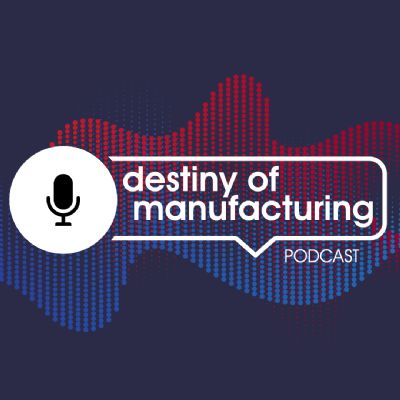Among key concerns were scheduling capacity, making adjustments and shifting things around—to ensure that Morgan Li could support its clients. “That became a priority.”
In terms of human resources, the company was able to reposition 67 displaced employees among its other four plants. “Nobody lost their job as a result of the fire,” Andy says. “Families were not impacted that way. Everyone came together; people volunteered to do things, rolled up their sleeves and did whatever was needed.”
Rebuilding
The process of rebuilding the stricken facility has begun. There never was a doubt about rebuilding—not this third-generation, family-owned company. “My grandfather sold the first shoe shelf to Walmart,” Andy says, “starting what today is a three-generation partnership, which is super cool.”
Reflecting on the fire and what has transpired since, Andy calls it a “weird success story,” adding that “a lot of good has come from it, personally and from a business perspective.”
From a business standpoint, the demand pressure prompted the company to hire a consulting firm that focused on improving operations, which has helped to maximize efficiencies and increase productivity. “And from a personal standpoint,” he says, “when things go wrong, I now have a completely different outlook. A fire like that…it’s your worst nightmare. Obviously, we don’t ever want to go through that again. But having been through the worst and seeing how everyone banded together—that is something to be shared and to be proud of.”
Another Comeback Story You Can Be Part Of
Several years ago, I first witnessed metal stamping at toy manufacturer Nylint, in Rockford, IL, another family-owned company. I came away fascinated at the progression of a blank from a steel coil as it went from press to press to emerge as a miniature fire engine, truck or car. At the time, Nylint’s toys competed for shelf space with large corporate brands such as Tonka and Hasbro. What distinguished the high-quality, steel-stamped toys were their realistic features, a result of their designs being scaled-down versions of real vehicles. Nylint engineers designed them from actual vehicle blueprints; intricate details and durability came standard. The vehicles were child-friendly and child-tested, tough enough for crash play, and hemmed to keep sharp edges from small fingers.
I spoke with one of the company founder’s granddaughter, Emmy Klint. She felt a special connection to the toys, even though she was only 12 when the 64-yr.-old company succumbed to the degradation of offshoring and video games and closed its doors in 2001. She felt the connection especially because of her fondness for her deceased grandfather, company co-founder Ragnar Klint.
“Those toys…there was a lot of my grandfather in them,” she says.
Over the years, Klint committed to relaunching the company and to resuming the employer role that Nylint Toys had held in Rockford. “I saw what offshoring did to our town. I wanted to bring Nylint back,” she says.
After attending college and earning an MBA and then a law degree, Klint, during a trip home to Rockford to visit family, had her dream to relaunch Nylint Toys reawakened. That happened when she saw her children playing with Nylint toys at her mother’s house. “They were playing with toys older than I was,” she recalls. She set out to resurrect the great toy company Nylint had been and bring to today’s children high-quality, durable steel toys—those toys that had been pushed aside for “plastic junk that breaks, and video and electronic games,” she says. “Our generation of parents wants to limit mindless gaming and replace it with imaginative, hands-on play.”
Using her legal skills, Klint applied for the Nylint trademark and reclaimed the Nylint brand. Next, working with an accelerator company, she pursued manufacturing the toys domestically, but encountered unwillingness from metal stampers and fabricators to produce in small, initial-launch-sized quantities. “We couldn’t find anyone to take an order under $2 million,” she says. Also, without a firm footing in manufacturing, she looked for a company that could produce the toys start to finish, to no avail.
Undeterred, she pressed on. In 2019, the accelerator company connected her and her husband, Shaun Chokshi, with domestic designers, engineers and branding companies, and offshore manufacturers to produce 8000 toys. Then Covid hit, and production underwent the same halts and disruptions that many other factories experienced.
Emily and Shaun encountered more hurdles. Remember that container ship that got stuck in the Panama Canal and blocked transport behind it? Their beta-test shipment was on one of those blocked ships. Then, once the ship arrived onshore later in 2021, the foreign-made toys failed the CPSC’s child-safety certificate. The couple hired an attorney who was able to keep the toys from being destroyed by recategorizing them as collectors’ items.
Fast forward to 2023, as (beginning in March) the first batch of toys from Nylint now are being sold and shipped directly to customers. To realize her original dream, however, Klint really wants the next batch of toys to be U.S.-manufactured.
Metal formers reading this column, that’s where you come in. Are there any outstanding, flexible stamping manufacturers willing to help Emmy Klint revive Nylint Toys’ high-quality line of toys? If so, I’ll follow your story in an upcoming issue of MetalForming. Please contact me, and let’s talk.
Gains from Pain
There’s something very moving about comeback stories such as these. My favorites recount how a “comeback kid” grows and affects change—much like Ramona Pierson, who recovered from a bone-crushing accident, then earned her Ph.D. in Neuroscience and went on to invent upgrades to MRI machines. And Niki Lauda, who pushed past pain and fear after surviving a fiery Formula One accident not only to win another championship, but to push the industry to install safety features to save other drivers from the same fate.
That brings me to my own comeback story, which is neither heroic nor extraordinary. Having previously served as editor of STAMPING Journal magazine, I’m now happy to be here at PMA and MetalForming magazine. Please write when you have a moment. I’d love to hear from you.� MF
Technologies: Management









 Podcast
Podcast